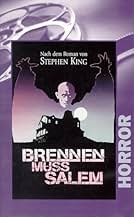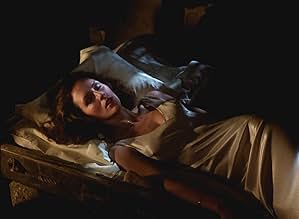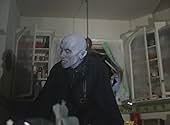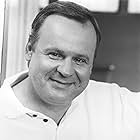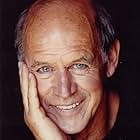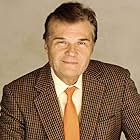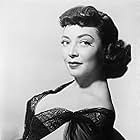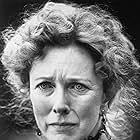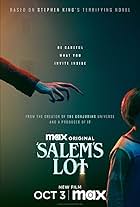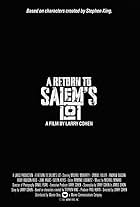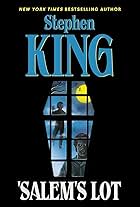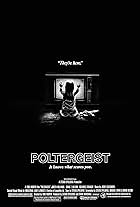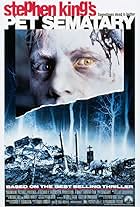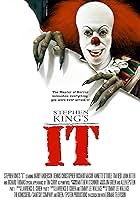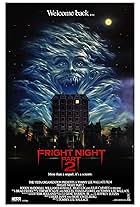A novelist and a young horror fan attempt to save a small New England town which has been invaded by vampires.A novelist and a young horror fan attempt to save a small New England town which has been invaded by vampires.A novelist and a young horror fan attempt to save a small New England town which has been invaded by vampires.
- Nominated for 3 Primetime Emmys
- 4 nominations total
Browse episodes
Storyline
Did you know
- TriviaThe exterior for the Marsten House was actually a full-scale facade built upon a smaller pre-existing hill-top house. In total, the facade cost the production an estimated $100,000 dollars to build. In 1979, an entire house (including the interiors) could have been made for that amount.
- GoofsWhen the younger Glick brother is abducted (and later presumably murdered by Barlow) he's wearing a jacket, t-shirt, dungarees and sneakers. After which, he appears to his brother wearing pajamas.
- Crazy creditsThe text of the opening credits appear and dissolve piece by piece into each other in a jigsaw puzzle fashion.
- Alternate versionsSalem's Lot originally aired as a two-night mini-series with the first episode airing on 17 November 1979 and the second episode airing the following week on 24 November 1979.
- ConnectionsFeatured in Stairs (1986)
Featured review
This is one of the most richly atmospheric films in horror, an article of pure latenight seduction and phosphorescent darkness.
Atmospheric not in the sense that a dry ice machine has pumped a catacomb full of haze and cobwebs are strategically placed in some dark corner, but as a place lived, with naturally dark corners and tangible portents: the old dark house on the hill breathing evil, the antique shop downtown, all velvety smell and musty colors, the small town lined with porticoes bathed in the quiet of a lazy night, yet harboring secrets and vice from inside. Prying eyes staring from behind a curtain.
Oh, at some point vampires come flying through the window, and it's still fine by me, it's one of the better vampire films and at 3 hours it's better fleshed than most of them; but I am just not attuned to the whole vampire lore so I leave this part to be enjoyed best by the traditional horror fan. It is actually one of the more potent retellings of the most familiar story in this field, I was pleasantly surprised to see that it was not quite Dracula but that older film with longer shadows, so I will not spoil the discovery for you.
But the first part intrigues me in stranger ways, more suggestive, with menace that goes unspoken. The small-town facade that would later resurface in Twin Peaks.
There is a notion that matters in all this, but which is not pursued at all; the writer who feels from his perspective that it was his presence that awakened evil, it's fitting that it's coming from a writer because it's a self-centered, imaginative notion, but which from our end we know is bogus. Evil was already afoot, and was never centered around him. But he wistfully imagines himself at the center so he can write about it.
So I don't know what happened with Tobe Hooper. He was never very elegant with a camera, the way Argento was or occasionally Carpenter, but he was unmatched in his feel for the aural qualities of film. He could make a room hum with evil. My guess is that, being an intuitive maker, the feel came and went, or he forgot how to tap into it (you can see as early as Eaten Alive how he seems to be desperately trying to capture again the muse that gave him Texas Massacre). Or he plainly stopped actively chasing after the right material.
This was just right for him. Only Kubrick has better adapted Stephen King to my mind.
Atmospheric not in the sense that a dry ice machine has pumped a catacomb full of haze and cobwebs are strategically placed in some dark corner, but as a place lived, with naturally dark corners and tangible portents: the old dark house on the hill breathing evil, the antique shop downtown, all velvety smell and musty colors, the small town lined with porticoes bathed in the quiet of a lazy night, yet harboring secrets and vice from inside. Prying eyes staring from behind a curtain.
Oh, at some point vampires come flying through the window, and it's still fine by me, it's one of the better vampire films and at 3 hours it's better fleshed than most of them; but I am just not attuned to the whole vampire lore so I leave this part to be enjoyed best by the traditional horror fan. It is actually one of the more potent retellings of the most familiar story in this field, I was pleasantly surprised to see that it was not quite Dracula but that older film with longer shadows, so I will not spoil the discovery for you.
But the first part intrigues me in stranger ways, more suggestive, with menace that goes unspoken. The small-town facade that would later resurface in Twin Peaks.
There is a notion that matters in all this, but which is not pursued at all; the writer who feels from his perspective that it was his presence that awakened evil, it's fitting that it's coming from a writer because it's a self-centered, imaginative notion, but which from our end we know is bogus. Evil was already afoot, and was never centered around him. But he wistfully imagines himself at the center so he can write about it.
So I don't know what happened with Tobe Hooper. He was never very elegant with a camera, the way Argento was or occasionally Carpenter, but he was unmatched in his feel for the aural qualities of film. He could make a room hum with evil. My guess is that, being an intuitive maker, the feel came and went, or he forgot how to tap into it (you can see as early as Eaten Alive how he seems to be desperately trying to capture again the muse that gave him Texas Massacre). Or he plainly stopped actively chasing after the right material.
This was just right for him. Only Kubrick has better adapted Stephen King to my mind.
- chaos-rampant
- Oct 19, 2011
- Permalink
Details
Contribute to this page
Suggest an edit or add missing content




